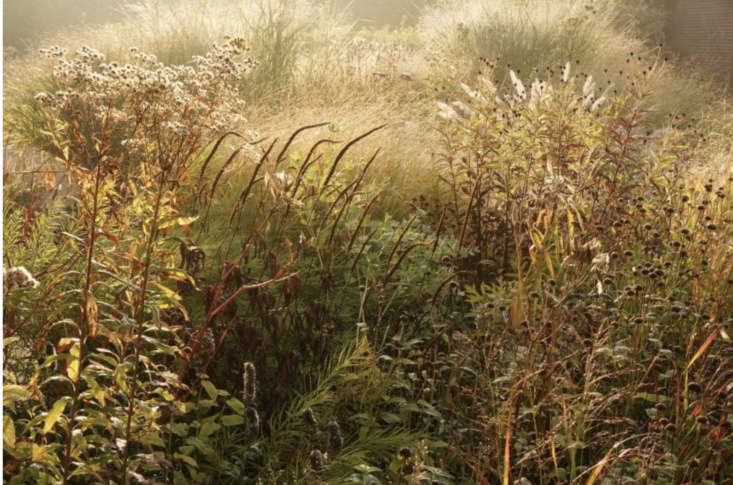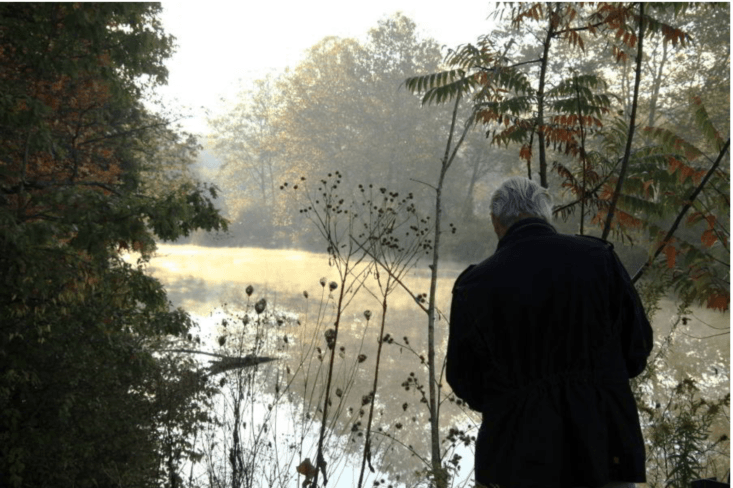If there’s a rock star garden designer worthy of a biopic, then Piet Oudolf is probably the one. Revered and admired, the Dutch landscaper has become famous the world over for his breathtaking projects: from New York’s High Line to Hauser & Wirth’s sublime prairie garden in Somerset, England, to his private garden and test beds at Hummelo in his native Holland.
So it was a stroke of genius for filmmaker Thomas Piper to convince Oudolf to allow him to film his creative process, and what he has created in Five Seasons: The Gardens of Piet Oudolf is an elegant, poignant, and unprecedented glimpse into the 73-year-old designer’s world and thoughts.
Piper’s original intention was to make a short piece about Hummelo. But the project soon grew and ended up being shot over two years with a further year for editing. For gardeners everywhere, the film is a tantalizing 75 minutes in which to lose yourself in one man’s vision and passion.
Screenings are scheduled in theaters throughout the US, Canada, New Zealand, and Australia from now through September. See the list of Five Seasons screenings to find a theater near you.
Photograph courtesy of Five Seasons.

Piper begins with Oudolf working in his studio, poring over the squeaky marks he makes on paper to create mesmerizing sketches of landscape design plans. (The beautiful documents once had their own gallery show.) And perhaps one of the most surprising elements of the film is how solitary Oudolf’s work is, no matter how vast the landscape he designs. Oudolf’s work process is a source of intrigue for the filmmaker.
“Maybe the most genuine surprise was learning that what I took for granted, that Piet worked alone in his studio, was actually so extraordinary,” Piper says. “I was initially drawn to the aesthetic aspect of his work, so for me that he fit such a romantic profile of an artist, toiling away uninterrupted in his studio, conjuring something from nothing, was in a way what I was expecting I’d find. That he’s been able to maintain that approach even as he works on very-large-scale public projects, knowing what I know now, retroactively amazes me.”

Those vast projects are certainly awe-inspiring. Fortuitously, during filming Oudolf was about to embark on the planting at Hauser & Wirth so we get ringside seats for the astonishingly complex arrangement of 54,000 plants being laid out. The designer strolls around the garden calmly, surveying the sea of tiny black pots for any inconsistencies in the design and pointing out tweaks to the planting team.
There were plenty of challenges for the New York–based filmmaker (his geographical distance from Oudolf for one), yet getting access to Oudolf’s projects and pilgrimages wasn’t among them. “Piet was remarkable in letting me know when something interesting was coming up, especially all the excursions that are a big part of the movie: the walk through the post-industrial woodland in Pennsylvania or the visit to see the wildflowers in the Texas Hill Country,” says Piper.

“My idea to capture yearlong time-lapse sequences was an enormous logistic headache,” says Piper. “Otherwise, it was more of a challenge just to figure out how to shoot the gardens in an appropriate way. Up to this point I’d shot lots of architecture, i.e., static buildings, where maybe the light is changing but otherwise nothing’s exactly moving around. Shooting gardens and landscapes was completely new to me. So it was the aesthetic or stylistic decisions that took a little while to find—things like letting the camera movement be ‘looser’ and a little ‘messier’ like Piet’s gardens, versus static and composed. Even ‘uglier’ with things like focus going out or camera flares.”

Oudolf strives to have his designs be visually compelling at any given moment, not just a “peak” season, says Piper. “It’s of course subjective. He readily admits (maybe even takes a bit of pride?) that plenty of people don’t find his gardens attractive, especially in winter. And I do think it takes a little training your eye to see the ‘beauty’ of what he’s seeing. But then that was always the attraction for me to do the film in the first place: that he’s compelling us to change the way we see.”
But the weather was not an issue. Instead of dealing with challenging conditions, Piper realized that every time he had traveled to Hummelo to shoot, he was blessed with perfect light: “There was a point after nearly two years of shooting where I realized it hadn’t rained once while I was shooting there. Which, in the moment was a blessing, but who would ever believe a film about Holland without rain? I had to resort to asking Piet to take his own camera out any time it rained and get whatever footage he could. So the rain scene during summer in the movie is all cut from Piet’s footage. I don’t know what anyone else thinks of it, but for me that scene is like a cathartic release from disbelief.”

On June 13 both Thomas Piper and Piet Oudolf will attend two New York City screenings at IFC Center with question-and-answer sessions after the movie. Piper also will attend subsequent screenings. Locations, dates, and links to buy tickets are all listed at Five Seasons.
Do Piet Oudolf’s landscapes inspire you to add four-season perennials and grasses to your own garden? Start with our curated guides to Garden Design 101, including our field guides to designing with Grasses and Perennials. Read more:
- Designer Visit: Piet Oudolf’s Otherworldly Garden at Hauser & Wirth Somerset
- 10 Garden Ideas to Steal from the High Line in New York City
- 10 Garden Ideas to Steal from Superstar Dutch Designer Piet Oudolf









Have a Question or Comment About This Post?
Join the conversation